-
 Bitcoin
Bitcoin $105,042.4127
-0.65% -
 Ethereum
Ethereum $2,624.4536
-0.43% -
 Tether USDt
Tether USDt $1.0005
0.01% -
 XRP
XRP $2.2044
-2.32% -
 BNB
BNB $665.1362
-0.71% -
 Solana
Solana $153.5104
-2.30% -
 USDC
USDC $0.9998
0.02% -
 Dogecoin
Dogecoin $0.1899
-3.35% -
 TRON
TRON $0.2726
1.18% -
 Cardano
Cardano $0.6733
-3.57% -
 Hyperliquid
Hyperliquid $35.4655
-2.98% -
 Sui
Sui $3.1768
-3.24% -
 Chainlink
Chainlink $13.8519
-3.37% -
 Avalanche
Avalanche $20.1277
-6.66% -
 Stellar
Stellar $0.2671
-2.57% -
 UNUS SED LEO
UNUS SED LEO $8.9427
-0.89% -
 Bitcoin Cash
Bitcoin Cash $401.2716
-0.60% -
 Toncoin
Toncoin $3.2112
-0.19% -
 Shiba Inu
Shiba Inu $0.0...01285
-2.22% -
 Hedera
Hedera $0.1681
-2.98% -
 Litecoin
Litecoin $88.5572
-2.01% -
 Polkadot
Polkadot $4.0295
-3.83% -
 Monero
Monero $318.1238
-8.04% -
 Ethena USDe
Ethena USDe $1.0012
-0.01% -
 Bitget Token
Bitget Token $4.7275
-2.12% -
 Dai
Dai $0.9998
-0.03% -
 Pepe
Pepe $0.0...01195
-3.89% -
 Pi
Pi $0.6506
-0.28% -
 Aave
Aave $265.8662
-0.34% -
 Uniswap
Uniswap $6.3226
-5.78%
Coinbase staking operation manual: from entry to mastering coin earning skills
Learn to stake on Coinbase and earn passive income with ETH2, XTZ, ADA, and SOL; maximize rewards by staking more and staying informed.
Jun 03, 2025 at 11:07 am
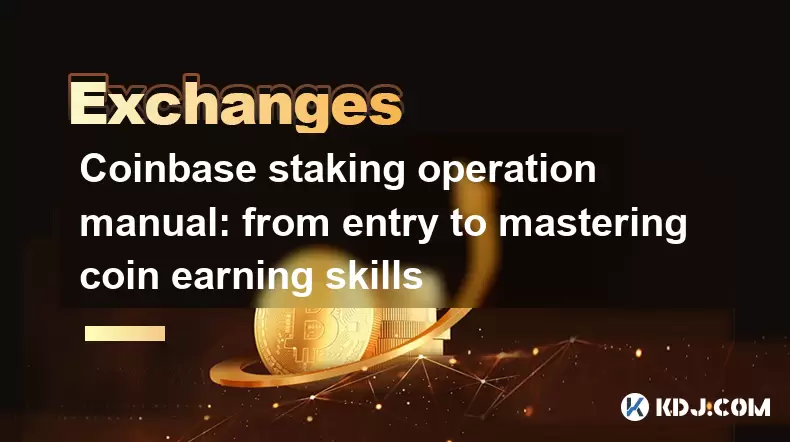
Coinbase staking operation manual: from entry to mastering coin earning skills
Staking has become a popular way for cryptocurrency enthusiasts to earn passive income, and Coinbase, one of the world's leading cryptocurrency exchanges, offers a user-friendly platform for staking various cryptocurrencies. This manual will guide you through the process of staking on Coinbase, from setting up your account to mastering the skills needed to maximize your coin earnings.
Understanding Staking on Coinbase
Staking on Coinbase allows you to earn rewards by holding certain cryptocurrencies in your wallet. This process supports the blockchain network by validating transactions and maintaining the integrity of the network. Coinbase currently supports staking for several cryptocurrencies, including Ethereum 2.0 (ETH2), Tezos (XTZ), Cardano (ADA), and Solana (SOL). Each of these assets has its own staking mechanism and reward structure, which Coinbase simplifies for its users.
To start staking, you need to have a Coinbase account and hold the supported cryptocurrencies in your Coinbase wallet. The rewards you earn are typically distributed in the same cryptocurrency you staked, and the amount of rewards depends on the amount staked and the specific staking rules of the cryptocurrency.
Setting Up Your Coinbase Account for Staking
Before you can start staking, you need to set up your Coinbase account and ensure it is ready for staking. Here's how you can do that:
- Create a Coinbase Account: If you don't have an account yet, visit the Coinbase website and sign up. You'll need to provide your email address, create a password, and complete the identity verification process.
- Fund Your Account: Once your account is set up, deposit funds into your Coinbase wallet. You can do this by transferring cryptocurrencies from another wallet or by purchasing them directly on Coinbase.
- Enable Two-Factor Authentication (2FA): For security purposes, it's crucial to enable 2FA on your account. This adds an extra layer of protection to your account and your staked assets.
How to Stake on Coinbase
Staking on Coinbase is straightforward, but it's important to follow the steps carefully to ensure a smooth process. Here's how you can stake your cryptocurrencies:
- Navigate to the Staking Page: Log into your Coinbase account and go to the 'Earn' section. Here, you'll see the list of cryptocurrencies available for staking.
- Select the Cryptocurrency: Choose the cryptocurrency you want to stake. Click on the 'Stake' button next to the cryptocurrency you've selected.
- Enter the Amount to Stake: You'll be prompted to enter the amount of cryptocurrency you want to stake. Make sure you have enough in your wallet to cover the minimum staking amount, if applicable.
- Confirm the Staking: Review the details and confirm your staking. Once confirmed, your staked assets will be locked in your Coinbase wallet and start earning rewards.
Maximizing Your Staking Rewards
To maximize your staking rewards on Coinbase, it's important to understand the factors that influence your earnings. Here are some tips to help you get the most out of your staking:
- Stake the Maximum Amount: The more you stake, the more rewards you can earn. If you have the funds, consider staking the maximum amount allowed for the cryptocurrency.
- Keep Your Staked Assets in Your Wallet: Ensure that your staked assets remain in your Coinbase wallet. Moving them to another wallet will stop the staking process and you'll miss out on potential rewards.
- Stay Informed About Staking Changes: Coinbase may update its staking policies or add new cryptocurrencies for staking. Stay informed about these changes to adjust your staking strategy accordingly.
Managing Your Staked Assets
Once you've staked your assets, it's important to manage them effectively to ensure you continue earning rewards. Here are some key points to keep in mind:
- Monitor Your Rewards: Regularly check your Coinbase account to see the rewards you've earned. These rewards are typically added to your wallet automatically, but it's good practice to keep track of them.
- Understand the Lockup Periods: Some cryptocurrencies have lockup periods during which you cannot withdraw your staked assets. Be aware of these periods to avoid any surprises.
- Reinvest Your Rewards: Consider reinvesting your staking rewards to compound your earnings. This can significantly increase your returns over time.
Withdrawing Your Staked Assets
When you're ready to withdraw your staked assets, follow these steps:
- Navigate to the Staking Page: Go to the 'Earn' section of your Coinbase account.
- Select the Staked Cryptocurrency: Find the cryptocurrency you've staked and click on the 'Unstake' button.
- Enter the Amount to Unstake: Specify the amount of cryptocurrency you want to unstake. Keep in mind any lockup periods or minimum unstake amounts.
- Confirm the Unstaking: Review the details and confirm the unstaking. Your assets will be unlocked and available in your wallet after the unstaking process is complete.
Frequently Asked Questions
Q: Can I stake multiple cryptocurrencies at the same time on Coinbase?
A: Yes, you can stake multiple cryptocurrencies at the same time on Coinbase. Each cryptocurrency has its own staking process, so you can stake different assets independently and earn rewards on all of them.
Q: What happens if I want to sell my staked assets?
A: If you want to sell your staked assets, you'll need to unstake them first. This process may take some time due to lockup periods, so plan accordingly. Once your assets are unstaked, you can sell them on Coinbase or transfer them to another wallet.
Q: Are there any fees associated with staking on Coinbase?
A: Coinbase does not charge any fees for staking, but you should be aware of the network fees associated with the cryptocurrencies you're staking. These fees are not controlled by Coinbase and can vary based on network congestion.
Q: How often are staking rewards distributed on Coinbase?
A: Staking rewards on Coinbase are typically distributed on a regular basis, which can vary depending on the cryptocurrency. For most assets, rewards are added to your wallet daily or weekly, but it's important to check the specific details for each cryptocurrency.
Disclaimer:info@kdj.com
The information provided is not trading advice. kdj.com does not assume any responsibility for any investments made based on the information provided in this article. Cryptocurrencies are highly volatile and it is highly recommended that you invest with caution after thorough research!
If you believe that the content used on this website infringes your copyright, please contact us immediately (info@kdj.com) and we will delete it promptly.
- Dogecoin (DOGE) Price Prediction: Meme Cryptocurrency Could Reach $1.05 by Early June
- 2025-06-05 11:00:28
- Token-Mol: A Large-Scale Language Model for Molecular Pre-training
- 2025-06-05 11:00:28
- TLDR: Dogecoin (DOGE) Price Breaks Out As Market Cap Reaches $32 Billion, Targeting $0.65
- 2025-06-05 10:55:13
- Bitcoin (BTC) Hits Crucial Resistance Level That Could Push or Halt Its Rally Toward a New All-Time High (ATH)
- 2025-06-05 10:55:13
- Global Cryptocurrency Market Cap Now Stands at $3.32T, Down by 1.21% Over the Last Day
- 2025-06-05 10:50:13
- Uzbekistan Launches HUMO Token Pilot Targeting Financial Inclusion and Modernization
- 2025-06-05 10:50:13
Related knowledge
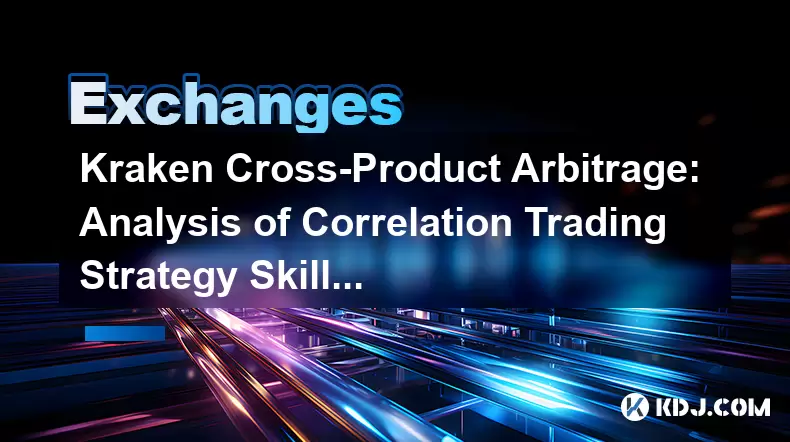
Kraken Cross-Product Arbitrage: Analysis of Correlation Trading Strategy Skills
May 31,2025 at 04:08am
Introduction to Kraken Cross-Product ArbitrageKraken, one of the leading cryptocurrency exchanges, offers a diverse range of trading products, including spot trading, margin trading, and futures trading. Cross-product arbitrage on Kraken involves exploiting price differences between these different trading products to generate profits. This strategy req...
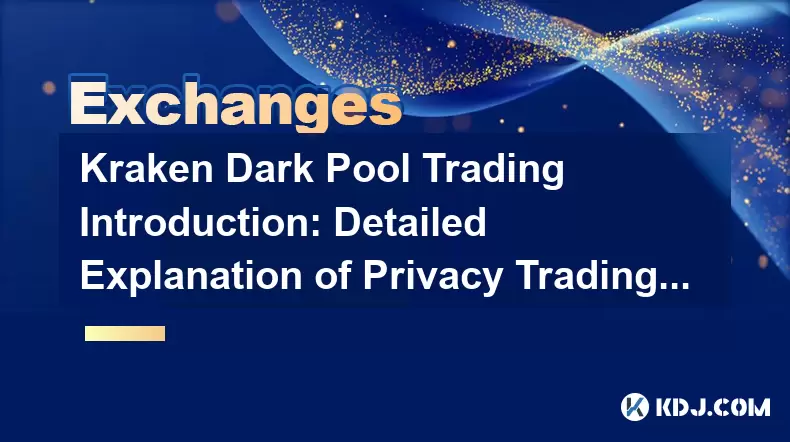
Kraken Dark Pool Trading Introduction: Detailed Explanation of Privacy Trading Operation Steps
Jun 02,2025 at 12:14pm
Kraken, one of the leading cryptocurrency exchanges, offers a unique feature known as Dark Pool Trading. This service is designed to provide traders with enhanced privacy and reduced market impact when executing large orders. In this article, we will delve into the specifics of Kraken's Dark Pool Trading, explaining what it is, why it's beneficial, and ...
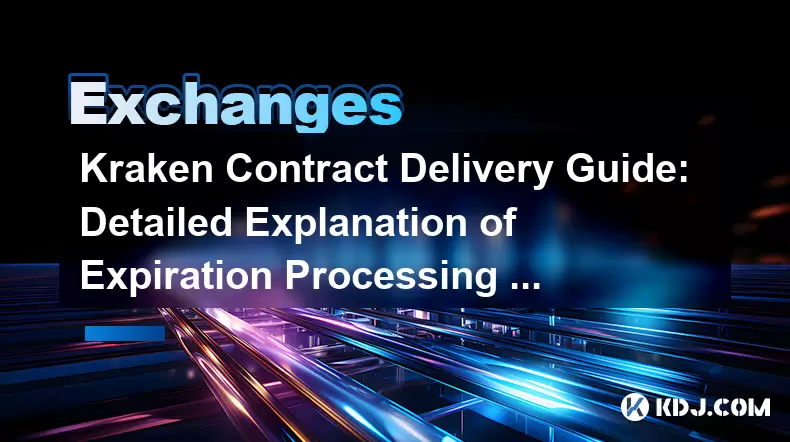
Kraken Contract Delivery Guide: Detailed Explanation of Expiration Processing Operation
May 31,2025 at 09:36am
Kraken, one of the leading cryptocurrency exchanges, offers a variety of trading options, including futures contracts. Understanding how to manage contract expirations is crucial for traders to maximize their returns and minimize potential losses. This guide provides a detailed explanation of the expiration processing operation on Kraken, ensuring you a...
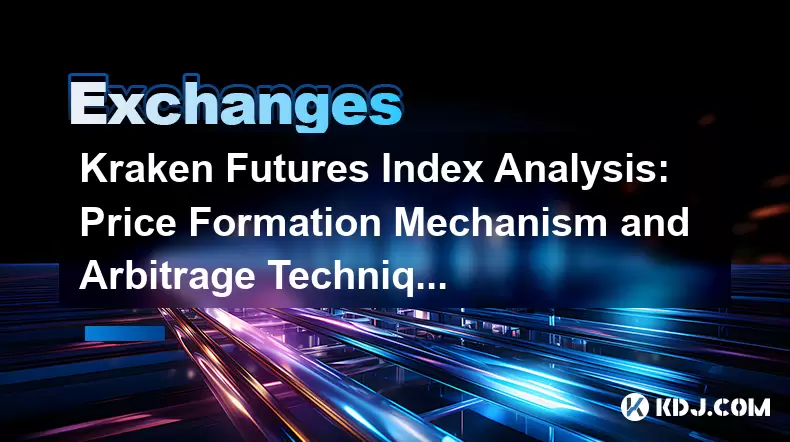
Kraken Futures Index Analysis: Price Formation Mechanism and Arbitrage Techniques
May 31,2025 at 02:42pm
Introduction to Kraken Futures IndexThe Kraken Futures Index is a crucial tool for traders and investors within the cryptocurrency market. It serves as a benchmark for futures contracts traded on the Kraken platform, providing insights into the price movements and market sentiment of various cryptocurrencies. Understanding the price formation mechanism ...
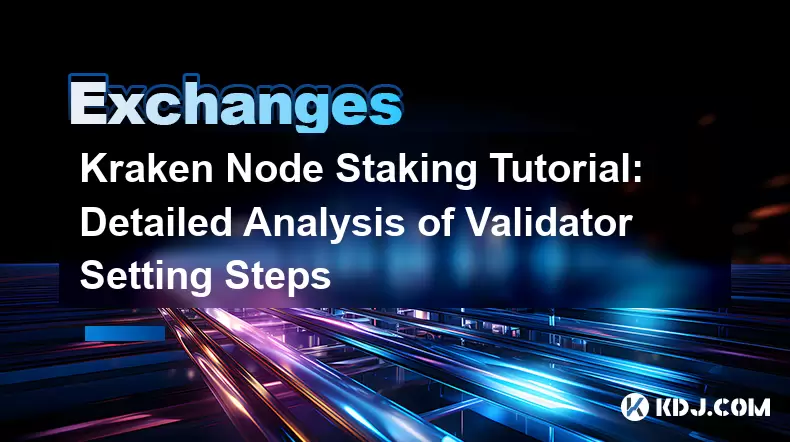
Kraken Node Staking Tutorial: Detailed Analysis of Validator Setting Steps
Jun 01,2025 at 11:18am
Introduction to Kraken Node StakingKraken, a well-known cryptocurrency exchange, offers a node staking service that allows users to participate in blockchain networks as validators. Staking on Kraken involves locking up your cryptocurrencies to support the operations and security of a blockchain network, in return for rewards. This tutorial focuses on t...
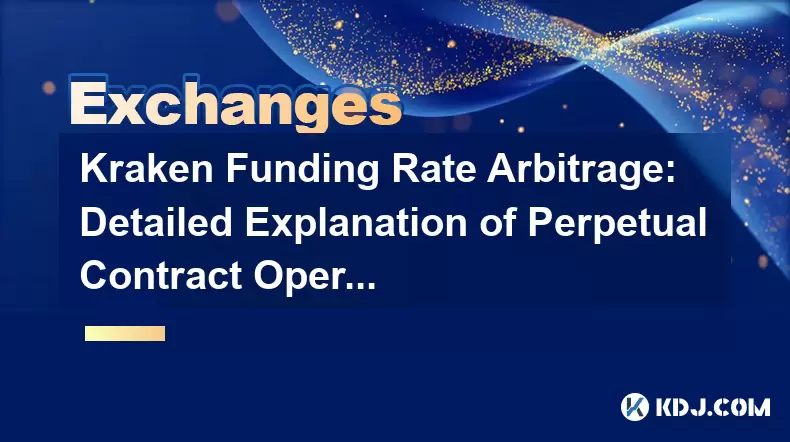
Kraken Funding Rate Arbitrage: Detailed Explanation of Perpetual Contract Operation Skills
Jun 04,2025 at 09:29am
Kraken Funding Rate Arbitrage: Detailed Explanation of Perpetual Contract Operation Skills Perpetual contracts, also known as perpetual swaps, have become a popular financial instrument in the cryptocurrency market. These contracts allow traders to speculate on the price of an asset without an expiration date, offering a unique opportunity for arbitrage...

Kraken Cross-Product Arbitrage: Analysis of Correlation Trading Strategy Skills
May 31,2025 at 04:08am
Introduction to Kraken Cross-Product ArbitrageKraken, one of the leading cryptocurrency exchanges, offers a diverse range of trading products, including spot trading, margin trading, and futures trading. Cross-product arbitrage on Kraken involves exploiting price differences between these different trading products to generate profits. This strategy req...

Kraken Dark Pool Trading Introduction: Detailed Explanation of Privacy Trading Operation Steps
Jun 02,2025 at 12:14pm
Kraken, one of the leading cryptocurrency exchanges, offers a unique feature known as Dark Pool Trading. This service is designed to provide traders with enhanced privacy and reduced market impact when executing large orders. In this article, we will delve into the specifics of Kraken's Dark Pool Trading, explaining what it is, why it's beneficial, and ...

Kraken Contract Delivery Guide: Detailed Explanation of Expiration Processing Operation
May 31,2025 at 09:36am
Kraken, one of the leading cryptocurrency exchanges, offers a variety of trading options, including futures contracts. Understanding how to manage contract expirations is crucial for traders to maximize their returns and minimize potential losses. This guide provides a detailed explanation of the expiration processing operation on Kraken, ensuring you a...

Kraken Futures Index Analysis: Price Formation Mechanism and Arbitrage Techniques
May 31,2025 at 02:42pm
Introduction to Kraken Futures IndexThe Kraken Futures Index is a crucial tool for traders and investors within the cryptocurrency market. It serves as a benchmark for futures contracts traded on the Kraken platform, providing insights into the price movements and market sentiment of various cryptocurrencies. Understanding the price formation mechanism ...

Kraken Node Staking Tutorial: Detailed Analysis of Validator Setting Steps
Jun 01,2025 at 11:18am
Introduction to Kraken Node StakingKraken, a well-known cryptocurrency exchange, offers a node staking service that allows users to participate in blockchain networks as validators. Staking on Kraken involves locking up your cryptocurrencies to support the operations and security of a blockchain network, in return for rewards. This tutorial focuses on t...

Kraken Funding Rate Arbitrage: Detailed Explanation of Perpetual Contract Operation Skills
Jun 04,2025 at 09:29am
Kraken Funding Rate Arbitrage: Detailed Explanation of Perpetual Contract Operation Skills Perpetual contracts, also known as perpetual swaps, have become a popular financial instrument in the cryptocurrency market. These contracts allow traders to speculate on the price of an asset without an expiration date, offering a unique opportunity for arbitrage...
See all articles























































































